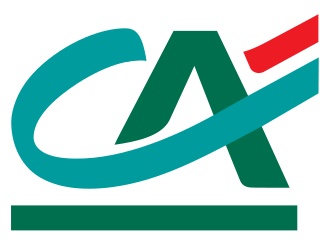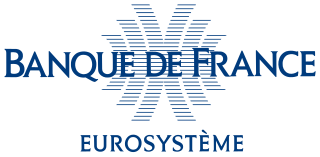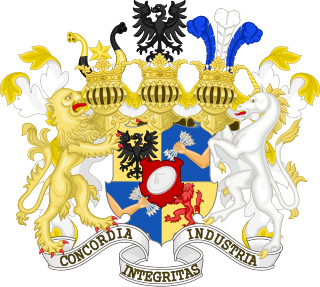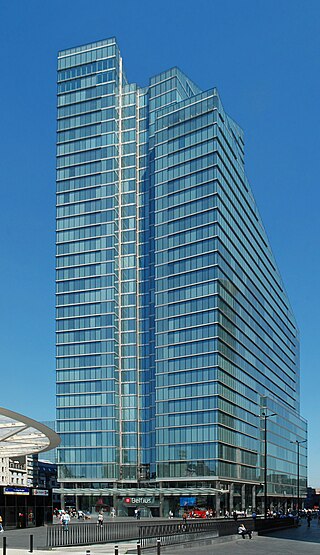Related Research Articles

The National Bank of Greece is a global banking and financial services company with its headquarters in Athens, Greece. It is the largest Greek bank by total assets.

Crédit Agricole Group, sometimes called La banque verte, is a French international banking group and the world's largest cooperative financial institution. It is second largest bank in France, after BNP Paribas, as well as the third largest in Europe and tenth largest in the world. It consists of a network of Crédit Agricole local banks, 390 millionédit Agricole regional banks and a central institute, the Crédit Agricole S.A.. It is listed through Crédit Agricole S.A., as an intermediate holding company, on Euronext Paris' first market and is part of the CAC 40 stock market index. Local banks of the group owned the regional banks, in turn the regional banks majority owned the S.A. via a holding company, in turn the S.A. owned part of the subsidiaries of the group, such as LCL, the Italian network and the CIB unit. It is considered to be a systemically important bank by the Financial Stability Board.

BNP Paribas is a French multinational universal bank and financial services holding company. It was founded in 2000 from the merger of Banque Nationale de Paris and Paribas, formerly known as the Banque de Paris et des Pays-Bas. With 190,000 employees, the bank is organized into three major business areas: Commercial, Personal Banking & Services (CPBS), Investment & Protection Services (IPS) and Corporate & Institutional Banking (CIB).

The Bank of France is the French member of the Eurosystem. Napoleon Bonaparte established it in 1800 as a private-sector corporation with unique public status, and Charles de Gaulle's government nationalized it in 1945 after several governance changes in the meantime. The Bank of France was granted note-issuance monopoly in Paris in 1803 and in the entire country in 1848, issuing the French franc. It remained France's sole monetary authority until end-1998, when France adopted the euro as its currency.

Dresdner Bank AG was a German bank, founded in 1872 in Dresden and managed from Berlin until 1945 and Frankfurt in the postwar era. Long Germany's second-largest bank behind Deutsche Bank, it was eventually acquired by Commerzbank in May 2009.

The history of banking began with the first prototype banks, that is, the merchants of the world, who gave grain loans to farmers and traders who carried goods between cities. This was around 2000 BC in Assyria, India and Sumer. Later, in ancient Greece and during the Roman Empire, lenders based in temples gave loans, while accepting deposits and performing the change of money. Archaeology from this period in ancient China and India also shows evidence of money lending.
S. G. Warburg & Co. was a London-based investment bank. It was listed on the London Stock Exchange and was once a constituent of the FTSE 100 Index. The firm was acquired by the Swiss Bank Corporation in 1995 and ultimately became a part of UBS.

The Rothschild banking family of France is a French banking dynasty founded in 1812 in Paris by James Mayer de Rothschild (1792–1868). James was sent there from his home in Frankfurt, Germany, by his father, Mayer Amschel Rothschild (1744–1812). Wanting his sons to succeed on their own and to expand the family business across Europe, Mayer Amschel Rothschild had his eldest son remain in Frankfurt, while his four other sons were sent to different European cities to establish a financial institution to invest in business and provide banking services. Endogamy within the family was an essential part of the Rothschild strategy in order to ensure control of their wealth remained in family hands.

Banque Misr is an Egyptian bank co-founded by industrialist Joseph Aslan Cattaui Pasha and economist Talaat Harb Pasha in 1920. The government of the United Arab Republic nationalized the bank in 1960. The bank has branch offices in all of Egypt's governorates, and currency exchange and work permit offices for foreign workers in Egypt.

Cooperative banking is retail and commercial banking organized on a cooperative basis. Cooperative banking institutions take deposits and lend money in most parts of the world.
The Banque de Paris et des Pays-Bas, generally referred to from 1982 as Paribas, was a French investment bank based in Paris. In May 2000, it merged with the Banque Nationale de Paris to form BNP Paribas.

Groupe Caisse d'épargne was a French cooperative banking group, with around, 4700 branches in the country. It started with the founding in 1818 of the Caisse d'Épargne et de Prévoyance de Paris, France's first savings bank. The group was active in retail and private banking, as well as holding a significant stake in the publicly traded investment bank Natixis. In 2009, it merged with Groupe Banque Populaire to form Groupe BPCE. A retail banking network under BPCE still uses the brand name.

Algemene Bank Nederland was a Dutch bank that was created in 1964 through the merger of the Netherlands Trading Society with the Twentsche Bank. In 1991, ABN merged with Amsterdamsche en Rotterdamsche Bank to form ABN AMRO.

The Lombard Odier Group is an independent Swiss banking group based in Geneva. Its operations are organised into three divisions: private banking, asset management, and IT and back and middle office services for other financial institutions. In 2022, the bank had total client assets of CHF 300 billion, which makes it one of the biggest players in the Swiss private banking sector.

Belfius Bank and Insurance, known as Dexia Bank Belgium until 1 March 2012, is a Belgian state-owned bank that emerged from the dismantling of the Dexia group which had been purchased by the Belgian government on 10 October 2011 for 4 billion euros.

RCI Banque SA, trading as Mobilize Financial Services, is a France-based international company that is a wholly owned subsidiary of Renault and part of Renault's Mobilize unit. RCI Banque specialises in automotive financing, insurance, and related activities for the Renault group brands globally for the Nissan group brands in Europe, Russia, Asia and South America; and for Mitsubishi Motors in the Netherlands.
Rothschild & Co is a multinational private and merchant bank, headquartered in Paris, France. It is the flagship of the Rothschild banking group controlled by the British and French branches of the Rothschild family.

The European Association for Banking and Financial History (eabh) is an independent, non-profit association based in Frankfurt am Main. Founded in 1990, the eabh aims to promote research on banking history; support the preservation historically valuable archive material of public and private banking institutions; and facilitate dialogue on key challenges and opportunities to the historical study of finance, insurance, and globalization. It maintains a global network of financial professionals and academics who meet to discuss and encourage projects in the field of financial and banking history. The eabh currently has 80 member organisations.

The Swiss Private Bankers Association is a Swiss trade association made up of banking institutions that meet the legal definition of a private banker according to Swiss law. Based in Geneva, Switzerland, and currently has six members.

ODDO BHF is an independent Franco-German financial services group. It was created from the alliance of a French family-owned business built up by five generations of stockbrokers and a German bank specialising in Mittelstand companies. ODDO BHF operates in three main businesses: private banking, asset management, and corporate and investment banking.
References
- ↑ Manfred Pohl; European Association for Banking History (1994). Handbook on the History of European Banks. Edward Elgar Publishing. p. 752. ISBN 978-1-85278-919-0 . Retrieved 7 October 2012.
- ↑ Youssef Cassis (18 March 2010). Capitals of Capital: The Rise and Fall of International Financial Centres 1780-2009. Cambridge University Press. p. 346. ISBN 978-0-521-14404-9 . Retrieved 7 October 2012.
- ↑ Vision; the European business magazine. 1978. p. 55. Retrieved 7 October 2012.
- ↑ Rehan Ul-Haq; Jorg Itschert (January 2004). "International Banking Strategic Alliances". Palgrave Macmillan.